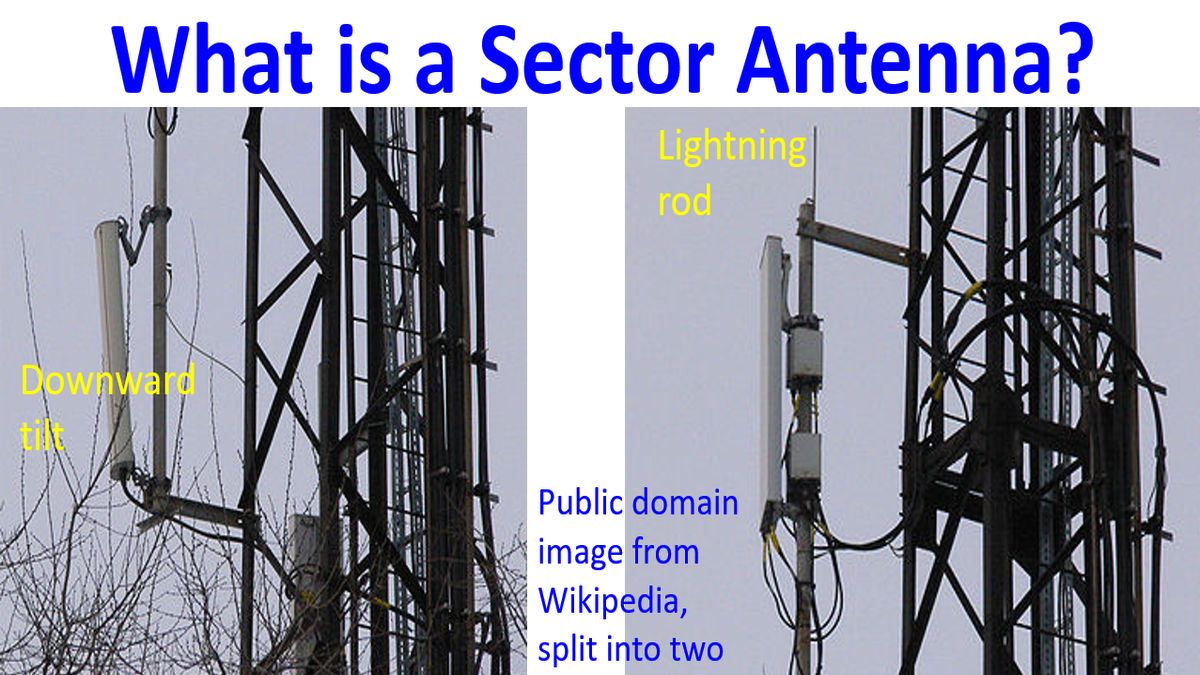What is a Sector Antenna?
What is a Sector Antenna?
Sector antennas are a familiar sight on top of mobile towers everywhere. The name comes from the sector shaped radiation pattern and not the shape of the antenna, which is more of an elongated rectangular external appearance. Actually what you are seeing is the fibre glass radome over the aluminium reflector inside for protection from the harsh outdoor conditions in the long run. There is an array of dipoles in front of the aluminium reflector. Sector antenas have high gain. They have a limited range of 4 to 5 km and may also be used for WiFi networks. Multiple antennas with different directions of the sectors are usually hosted on a single mobile tower. Different types of sector antennas may cover 60, 90 or 120 degree sectors.

The sector antennas are given a slight downward tilt, as seen in the first image, to give better reception on the ground. Instead of the mechanical tilt, the beam can also be tilted electronically using phased array technology. In that case, the tilt can be given by a technician using a remote control unit from the ground, without climbing up the antenna tower. Good grounding and lightning protection are given. The lightning rod can be seen at the top of the sector antenna in the picture.
Sectoral beams from different towers in a region have some overlap to ensure coverage. Large overlaps are avoided to prevent interference between the cells of each tower. Radiation pattern is in a horizontal sector, with very limited radiation vertically as it is not needed up there! In a 66 degree sector antenna, gain is down by 3dB at 33 degrees on either side and almost negligible at 60 degrees on either side. These are in comparison with the peak gain at the centre of the sector.